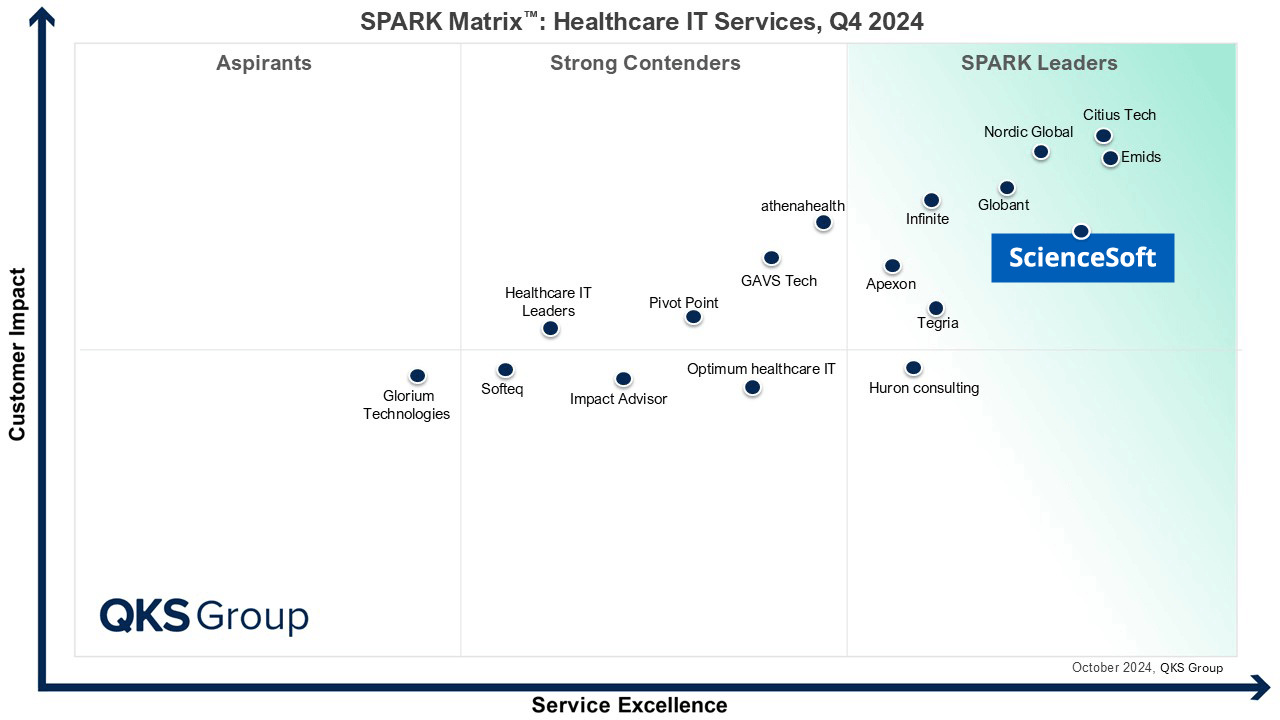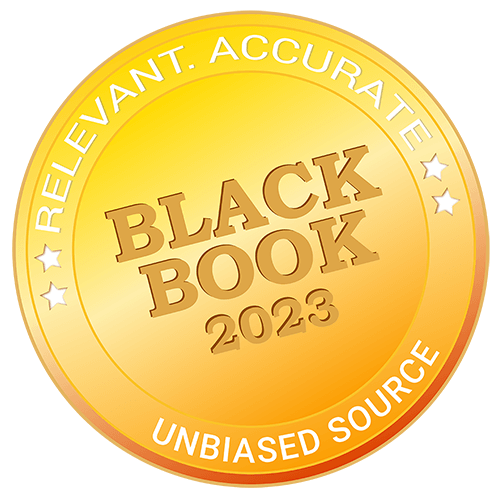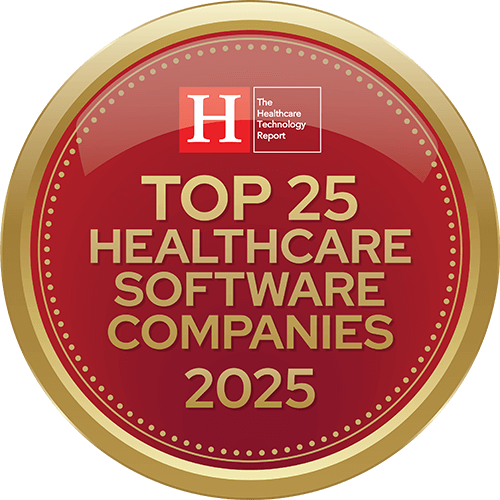Meditation App Development
Step by Step
Since 2005 in healthcare IT, ScienceSoft helps health and wellness businesses and startups expand their market reach and launch new revenue streams with mindfulness apps. Our solutions offer innovative features such as VR meditation environments, mood-enhancing soundscapes, and personalized sessions, ensuring high user engagement and satisfaction.
Meditation Apps at a Glance
Meditation apps provide access to guided meditation sessions and mindfulness exercises, helping cultivate mental and emotional well-being, reduce stress, and improve focus and concentration. The apps also feature calming soundtracks, customizable meditation timers, AI-driven progress tracking and analytics, personalized content recommendations, and more.
How to create a meditation app in 8 steps
- Define target niche, applicable regulations, competitive edge, and branding.
- Create SRS and prioritize MVP for early feedback.
- Set timeline, budget, milestones, and risk strategies.
- Design intuitive UX and soothing UI.
- Choose techs for front end and back end, build the app.
- Test functionality, performance, and usability.
- Check compliance, obtain certifications, and set the app live.
- Provide updates and address user feedback to enhance meditation experience.
- Main integrations: payment gateways, social media platforms, wearables, music streaming services, etc.
- Implementation time: 6–11+ months on average.
- Development costs: from $50,000 for an MVP to $800,000+ for a full-featured product, depending on the functional complexity and required integrations. Use our free calculator to determine the cost of your project.
- ROI: 233%+, depending on the app's capabilities and specifics, marketing and pricing strategies, competition in the market, user acquisition costs, ongoing maintenance and support expenses, and the overall economic environment.
- Famous examples: Headspace, Calm, Healthy Minds Program, Smiling Mind, Insight Timer, Aura, Simple Habit.
Meditation App Market
Anticipated to hit $5.11 billion in global revenue this year, with a CAGR of 8.49%, the meditation app market is projected to reach $7.08 billion by 2028. Among the key market trends is the adoption of the freemium model, where an app offers free basic features and charges a subscription fee for additional functionality like mood-tracking.
Meditation App Key Features
ScienceSoft recommends the following functionality to create an engaging and selling wellness app:
Healthcare providers may prescribe meditation apps to aid their patients' mental health and well-being, e.g., to help alleviate post-surgical pain or chronic pain in fibromyalgia or osteoarthritis. If your app is intended for clinical use, which implies it will handle personal health information (PHI), HIPAA compliance is a must. If the app is meant for personal use by individuals, HIPAA compliance is required only if users input PHI like demographic info, medical conditions, or biometric data into the app.
Sample Meditation App Architecture
Below, ScienceSoft's experts share a sample microservices-based architecture of meditation apps we develop.

Opting for microservices in your meditation app means it scales effortlessly and adapts quickly to emerging wellness needs. This ensures a responsive and future-proof app that is always in sync with what users want.
Key Meditation App Development Steps
The development process can vary widely based on the chosen project management methodology, time and budget limitations, regulatory requirements, stakeholder involvement, and technology stack.
1.
App conceptualization
This step will help you answer the following questions:
- Should your app target a specific niche (e.g., yoga or sleep meditation) or cover a broad spectrum of meditation practices?
- Will the app serve general wellness or clinical purposes? If the latter, what regulations and standards apply?
- What similar apps are there in the market, and what gaps do they have? What will be the app's competitive distinction?
- What pricing strategy will be adopted?
- What will be the brand identity, main message, and positioning?
Based on the FDA's policy for low-risk general wellness products, a meditation app is considered a general wellness product if it promotes a healthy lifestyle. Such an app must not be intended to diagnose, cure, mitigate, prevent, or treat any medical condition. Moreover, it must not be invasive, implanted, or involve a technology that may pose human safety risks.
At ScienceSoft, we can help you determine if your meditation app is a medical device. If not deemed a low-risk general wellness product, the app must undergo FDA submission to obtain FDA approval or clearance, depending on the level of risk associated with the device.
2.
Requirements engineering
Once the concept is finalized, it's time to define the functional and non-functional requirements and create an SRS (software requirements specification). Our team recommends starting with an MVP to test the idea and gather feedback early. The functional core will vary depending on the concept. For example, if your app centers around sleep meditation, it may initially include a library of soothing soundtracks, with extra features like progress tracking added later as the app evolves.
3.
Project planning
A plan usually includes the project timeline, resource allocation, budget, and milestones. It also outlines strategies for mitigating risks like low user engagement, platform compatibility issues, content quality and diversity, privacy concerns, etc.
4.
App design
When envisioning your app's architecture, consider microservices for:
- Simplified maintenance through independent service management.
- Reduced risk of system-wide disruptions due to fault isolation.
- Improved scalability and flexibility.
- Easy integration with third-party services and APIs.
The user experience should prioritize simplicity, intuitive navigation, personalization options, and gentle reminders to foster a calming and engaging meditation practice for your users.
It is crucial to consider cultural aspects during app design to ensure a culturally sensitive meditation app. This involves incorporating inclusive illustrations and iconography, culturally significant colors and patterns, respecting cultural aesthetics, and avoiding unintentional biases. This fosters an environment where users from various backgrounds feel welcome and engaged.
5.
Tech stack selection, app development, and integration
When choosing a framework for mobile development, consider React Native or Flutter for a hybrid app with a single codebase for both iOS and Android platforms. Node.js, Django, Ruby on Rails, and Flask are solid backend techs, but the choice will depend on project requirements.
6.
Quality assurance
The stage includes functional, performance, and usability testing to ensure that features like guided meditation sessions, mindfulness exercises, and stress-relief techniques work as intended across devices and platforms. Additionally, audio-visual quality evaluations are performed to guarantee a seamless and immersive user experience, making the app effective in promoting mental well-being.
7.
Deployment
This phase comprises the following steps:
- Checking the app’s compliance with relevant standards and regulations (e.g., FTC Act (for non-clinical apps), HIPAA and FDA policies (for clinical apps), GDPR (for EU), ADA).
- If your meditation software qualifies as a medical device, submitting it to the FDA for approval or clearance.
- Launching your app on popular app stores like App Store and Google Play, or on web platforms.
8.
Support and evolution
The stage involves providing ongoing technical support and updates to keep your app fresh and engaging. To enrich the users' meditation experience, we recommend staying responsive to user feedback and adding innovative features like VR meditation environments or biometric monitoring.
Build Your Meditation App with Professionals
What Makes Us a Trusted Partner in Meditation App Development
- Since 2005 in healthcare IT, 150+ successful healthcare IT projects.
- Professionals with 7–20 years of experience, including project managers, healthcare software architects, data scientists, cybersecurity specialists, and regulatory consultants.
- Vast expertise in AR/VR, AI/ML, big data, IoT.
- Proficiency in healthcare standards (e.g., HL7, ICD-10, LOINC, CPT, XDS/XDS-I, FHIR, DICOM).
- Experience in developing software compliant with HIPAA, HITECH, the Cures Act, FDA, FTC, NCPDP, OCR, GDPR, EU MDR, etc.
- Mature quality management system backed by ISO 13485 and ISO 9001 certifications.
- ISO 27001 certification to guarantee full security of our clients' data.
Our awards, recognitions, and certifications

Featured among Healthcare IT Services Leaders in the 2022 and 2024 SPARK Matrix
Recognized for Healthcare Technology Leadership by Frost & Sullivan in 2023 and 2025
Named among America’s Fastest-Growing Companies by Financial Times, 4 years in a row

Top Healthcare IT Developer and Advisor by Black Book™ survey 2023
Recognized by Health Tech Newspaper awards for the third time (2022, 2023, 2025)

Named to The Healthcare Technology Report’s Top 25 Healthcare Software Companies of 2025
ISO 13485-certified quality management system
ISO 27001-certified security management system
Typical Project Roles for Meditation App Development
To build meditation software, you need a well-orchestrated team with diverse skills and expertise. Below, ScienceSoft presents the essential roles that form the backbone of our meditation app development teams. Their composition varies depending on the service option and its scope.
Project manager
ScienceSoft's project managers ensure that the meditation app is developed as planned, costs and time are predictable, and uncertainty is addressed agilely.
Healthcare IT consultant
Identifies users’ pain points (e.g., maintaining meditation consistency), gathers the requirements, and translates them into a functional specification; determines the clinical or non-clinical nature of the app and defines compliance requirements; oversees the implementation of data security and privacy measures to safeguard sensitive health information.
Software architect
Designs the app's technical framework and integrations (e.g., with music streaming services, third-party meditation content providers).
UX designer
Defines user personas and scenarios (e.g., individuals looking for quick, on-the-go meditation sessions to manage everyday stress); designs end-to-end user journeys; develops UX wireframes and prototypes; tests meditation app accessibility and usability.
UI designer
Shapes a visual identity and an intuitive, calming user interface of your app; translates mindfulness-focused UX wireframes into UI design.
DevOps engineer
Designs the CI/CD pipeline; scales the infrastructure for peak user engagement (e.g., during meditation events or campaigns); supports the implementation of real-time user collaboration features (e.g., live meditations).
Mobile developer
Creates soothing GUI elements tailored to mindfulness practices; codes features like guided meditation sessions and progress tracking; addresses the bugs reported by QA engineers.
Backend developer
Builds the app's server side to implement features like personalized meditation recommendations and well-being analytics; integrates health APIs (e.g., WHOOP, Apple HealthKit, Withings); eliminates the bugs reported by QA engineers.
QA engineer
Tests meditation functionality and health API integrations; verifies that the app accurately collects and records user well-being metrics, such as heart rate measurements or mood assessments.
Regulatory consultant*
Ensures the app is developed, documented, and launched according to applicable regulations, standards, and laws, e.g., HIPAA, GDPR, PIPEDA, FTC Act; guides the FDA submission process, if necessary.
*For apps that qualify as medical devices or low-risk general wellness products according to the FDA's policy.
Cybersecurity specialist
Conducts pentesting, scanning of vulnerabilities (e.g., health metrics exposure caused by inadequate encryption or insecure data storage practices), security code reviews; collaborates with developers to implement encryption, authentication, and access controls.
Data scientist*
Creates and validates the data sets for machine learning algorithms; designs, trains, and tunes ML models for enhanced mindfulness experiences on the app (e.g., AI-driven attention monitoring, personalized meditation recommendations).
*For AI/ML-powered apps
Sourcing Models for Meditation App Development
Technologies We Rely On
Low-code development
QA tools
DevOps
Containerization
Automation
CI/CD tools
Monitoring
Telehealth
Video streaming
Messaging and conferencing
What Is the Price Tag for Your Meditation App?
The cost of meditation app development may vary from $50,000 to $800,000+, depending on software functionality and complexity. Other essential cost factors include sourcing and development (native, hybrid, or cross-platform) models, the number and nature of integrations, and required team composition.
When creating a high-end app, enabling integrations can constitute a large budget share. Here's the cost breakdown for each integration.
- AI chatbot: $120,000-300,000
- Biometric sensors (heart rate monitors, EEG headbands, skin conductance sensors, etc.): $100,000-250,000
- Wearable devices (smartwatches, fitness trackers, etc.): $50,000-150,000
- Accessibility devices (haptic feedback, adaptive input ones, etc.): $70,000-200,000
- Smart home devices (smart lights, aroma diffusers, sound machines, etc.): $60,000-180,000
- Virtual reality: $200,000-300,000
- Augmented reality: $15,000-40,000
- Meditation content providers, social media platforms: $20,000-80,000
- Video and music streaming services: $40,000-120,000
- Payment gateways: $30,000-120,000
$50,000–$100,000
For a native meditation app MVP with simple features, like guided meditations and stress reduction exercises.
$200,000–$300,000
For a cross-platform app with personalized meditation plans, goal setting, progress tracking, etc.
$500,000–$800,000+
For an upscale native meditation app with advanced features like AI chatbots, AR/VR meditation sessions, and more.
About ScienceSoft
Based in McKinney, TX, ScienceSoft brings 20 years of IT consulting and software development expertise, delivering dependable, user-centric healthcare solutions globally. Our projects rely on a robust quality management system backed by ISO 13485 and ISO 9001 certifications and on an ISO 27001-certified security management system. We see our mission in empowering your project's success, regardless of time and budget limitations or changing requirements.











